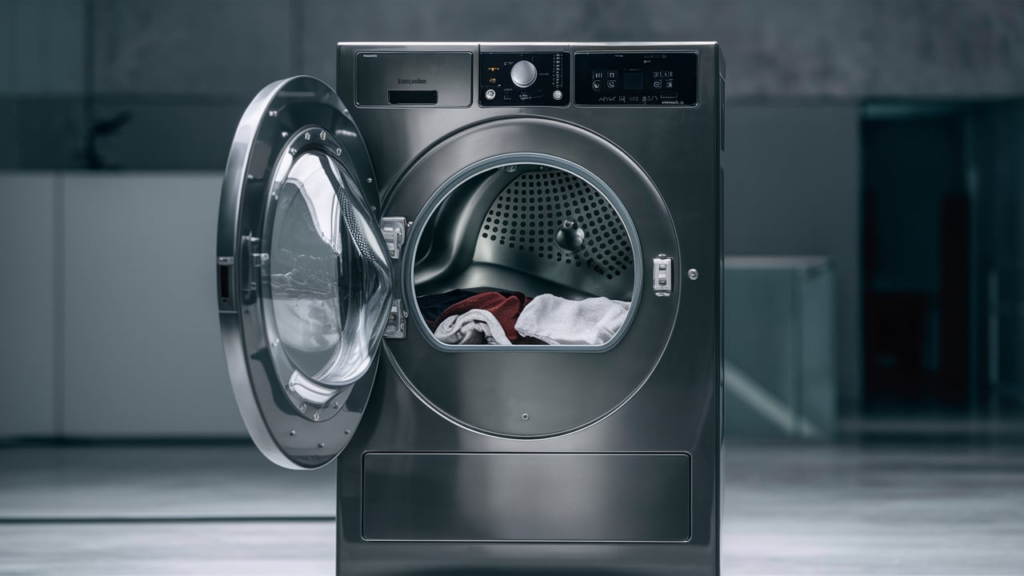
Dealing with a dryer that won’t start or stop? Learn how to check and replace the mechanical timer in your Kenmore electric dryer without calling a repair technician.
Understanding How the Timer Works
The mechanical timer in a Kenmore electric dryer controls the duration of drying cycles by regulating power to various components such as the motor, heating element, and blower. It consists of a small motor and a series of electrical contacts. Over time, these components can wear out or fail due to age, frequent use, or electrical issues.
Key parts of the timer include:
- Timer Motor: Advances the timer through its programmed cycles.
- Electrical Contacts: Control power flow to other parts of the dryer, like the heating element or drum motor.
- Cam Mechanism: Manages the sequence of operations in the drying cycle.
Tools You’ll Need
- Putty Knife
- 1/4-Inch Nut Driver
- Multimeter
Safety First
Before beginning any repairs, make sure safety is your top priority. Follow these precautions to protect yourself and your appliance:
- Unplug the dryer or switch off the circuit breaker to prevent electric shocks.
- Let the dryer cool completely if it was recently used.
- Rushing increases the chance of mistakes or injuries.
- A well-lit workspace helps you see and handle parts clearly.
- Remove clutter, and ensure pets and children are kept away.
- Work only in dry conditions and ensure your hands and tools are dry.
- Check your dryer’s user guide for specific safety or installation instructions.
- Use a gentle touch when removing or replacing parts to avoid causing damage.
- Wear insulated gloves to avoid cuts from sharp components.
- Avoid touching exposed wires directly. Use insulated tools if necessary.
- Take photos or notes of wire connections before disconnecting them to simplify reassembly.
- Do not test live voltage unless you are confident in your ability to prevent short circuits.
- Wear safety glasses or a dust mask if working with dust, debris, or chemicals.
How to Test and Replace the Timer on a Kenmore Electric Dryer
Test the Timer
- Use a putty knife to push in the two clips securing the control console.
- Push the console upward and backward to expose the timer.
- Locate the contacts labeled “BLK” and “BU” on the timer.
- Set the dryer to a running cycle.
- Use a multimeter to test the contacts for continuity.
- If no continuity is detected, the timer is defective and needs replacement.
Remove the Timer
- Take a clear picture of the wires connected to the timer for reference.
- Remove the timer knob by pulling it off.
- Unscrew the two screws securing the timer in place.
- Carefully remove the defective timer.
Install the New Timer
- Position the new timer and secure it with the screws.
- Reconnect the wires based on the reference picture.
- Reattach the timer knob.
- Snap the control console back into position until it clicks into place.
- Test the dryer by selecting a cycle to ensure the new timer is functioning correctly.
Also Read: Replace a Speed Queen dryer timer with this DIY guide
Maintenance Tips to Extend Timer Lifespan
Regular maintenance can keep your dryer timer in good condition and prevent premature failure:
- Clean the Dryer Regularly: Lint buildup can cause overheating, which may damage the timer and other components.
- Avoid Overloading: Overloading puts excess strain on the motor and timer, leading to quicker wear and tear.
- Inspect and Replace Worn Parts: Regularly check your dryer for signs of wear, such as frayed wires or corroded terminals, and replace them as needed.
- Use the Right Cycle: Select the correct drying cycle for each load to avoid overworking the timer.
- Protect Against Power Surges: Use a surge protector to shield your appliance from electrical spikes that can damage the timer.
Fixing or replacing your Kenmore dryer timer is definitely something you can handle with a little patience and the right tools. Remember to take your time, double-check your connections, and keep up with regular maintenance to avoid future headaches. Your dryer will thank you with more efficient and reliable performance!
